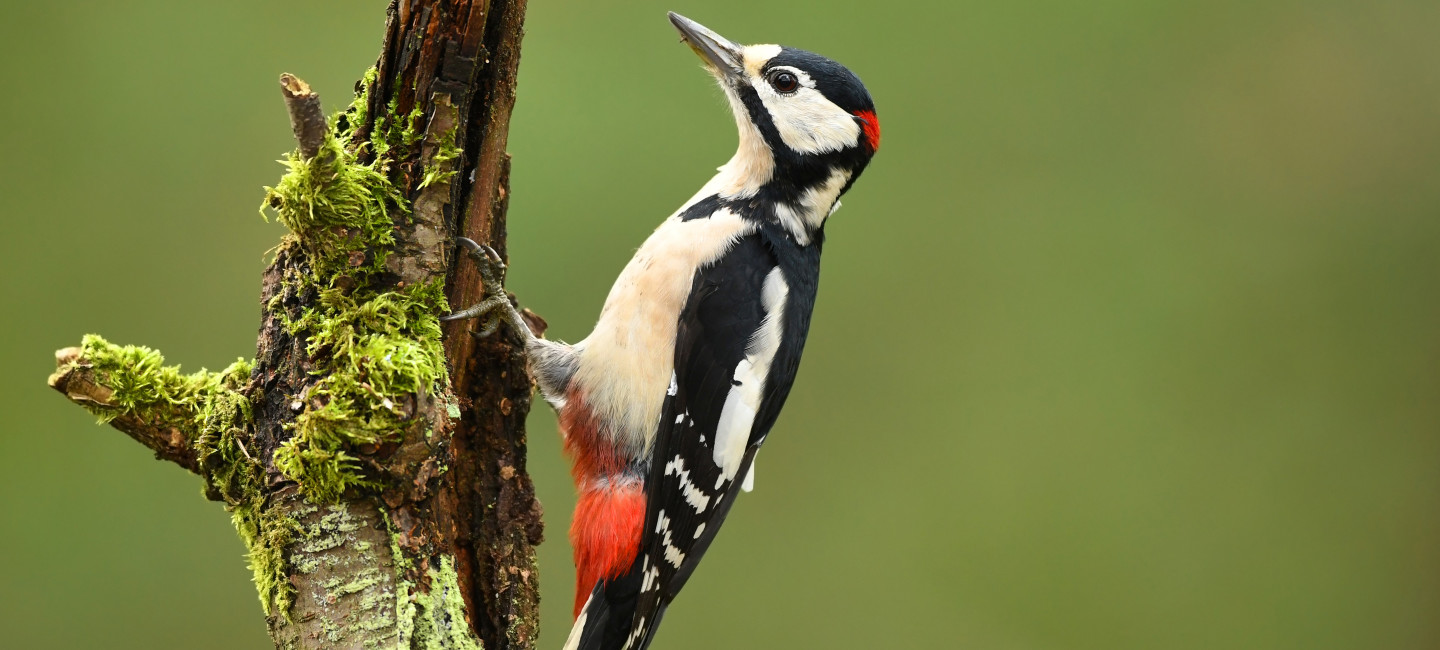Challenge winner’s fact file on Great Spotted Woodpeckers
11th August 2020 – Tags: Animal Studies, Conservation
The following fact file was written by Daniel Masters, a student on our Extended Diploma in Animal Management. Daniel was a winner of one of our weekly lockdown challenges, in which students were asked to create and submit two wildlife records alongside a photograph.
Daniel won the challenge and volunteered to write this fact file on Great Spotted Woodpeckers, which was recently featured in Biodiversity News in Norfolk.
Great Spotted Woodpeckers Fact File
Great Spotted Woodpeckers are extremely intelligent birds and have been known to use tools to access food. You may recognise them from the drumming sound they make which can be heard for miles across woods. They are the most widespread of the three species of woodpecker in the UK and can be found in most woodland patches and garden across the county. They are 21-23cm (8-9in) in length, the size of a starling, and weigh around 85g (3oz). Both sexes are glossy black above with two white oval shoulder patches. Underneath from the throat to the belly they are white and scarlet on the undertail.
Males' distinctive red crest
The difference between a male and female woodpecker is the red crest just below the head, only males have this red crest which is the best way of telling the difference and is used to attract a mate. Females have black head and lack this colourful crest. Juveniles have an orange/red head which will moult once they have reached full maturity, the females will lose all the colour on their head entirely, and the males will develop a red patch at the back of their head. Both sexes are very similar in size, they spend most of their time foraging in trees, tapping away at the bark to find grubs underneath which they will scoop up using their long tongue.
Communication
The woodpecker tongue is very complex, it has barbs at the end which are sticky and wrap around their prey so it can’t move, the tongue will then scoop them up from underneath the bark and the woodpecker will swallow them whole. To find prey they will hop between lots of trees to find grubs, different types of trees will have more variety and different species of grubs. Woodpeckers will communicate in different ways such as drumming and vocalisation, they have specific call which when learnt, is very distinctive, it is a series if high pitched cheeps. The sound travels long distances through the woods.
Courtship behaviours
During the breeding season, specifically during courtship behaviours, vocalisation is very common and is used frequently especially when the female is choosing a nest hole to raise their young in. Males will work very hard by excavating lots of holes in a particular area across their territory, the female will then choose one hole which she feels will be the safest and securest to raise their young in.
Nesting
Woodpeckers will not nest in the same hole each year, instead the male will create new holes each year for the female to choose. This means the holes which were abandoned or not used, benefit a lot of wildlife such as nuthatches, blue tits and even squirrels. These species will take advantage of the abandoned nest holes to raise their young in. This is because the woodpecker holes are considered one of or even the best place to raise young in the bird kingdom, the reason for this is the fact that the young are out the reach of predators and are well sheltered from bad weather such as rain and wind, due to the position and angle the hole was created. This means the woodpecker’s niche is not only to eat bugs such as bark beetles which can be very harmful to trees, but also provide secure nest holes and roosts for other birds and wildlife. Some species of birds never make nests, they will only use preloved or abandoned woodpecker holes.
Garden feeding
They have also worked out how to get a free meal without working for it, many gardens have feeders for birds, specifically a lot of garden have fat balls or lard, this is a particular favourite for the woodpecker, especially lard as it is packed full of fat and protein which the woodpecker needs in their diet. They have realised that they don’t have to work hard foraging to get a meal, however, it comes at a cost.
Avoiding predators
Many gardens are open which means they are exposed to predators, the woodpecker doesn’t have a specific predator, however, the sparrow hawk and the domestic cat have been known to catch woodpeckers as they are opportunist feeders. Because of this they don’t usually spend a lot of time on the feeders as they are conscious about being in the open, this is why they spend more time in the trees foraging as they feel safer and more secure out the reach of any potential predators.
